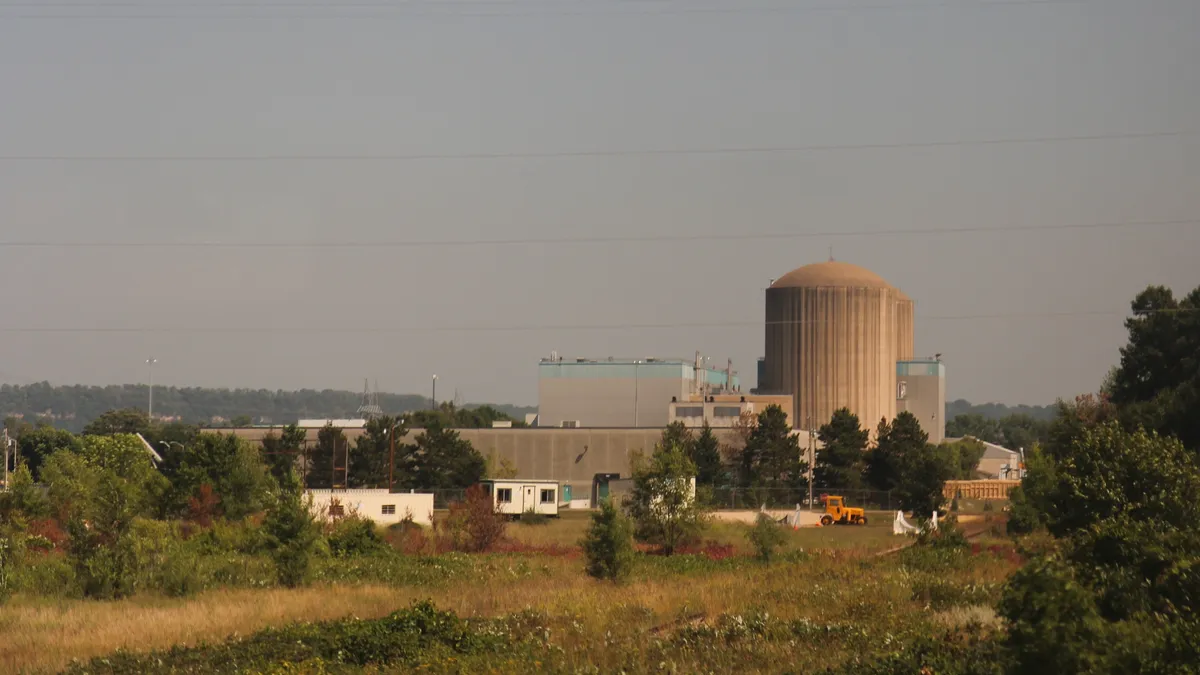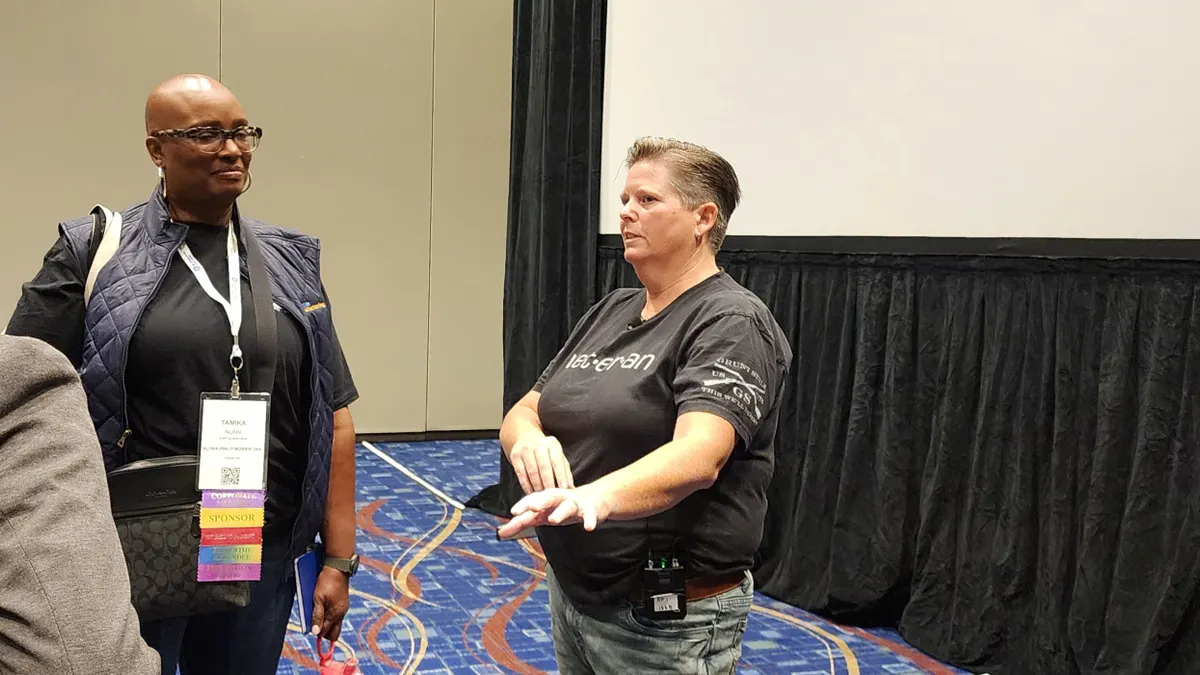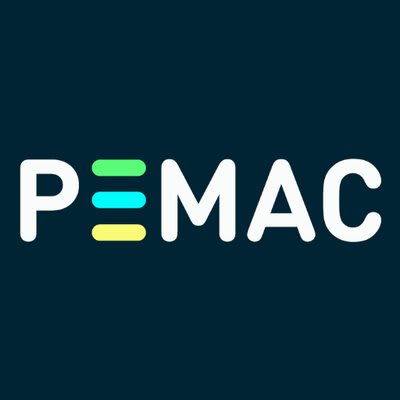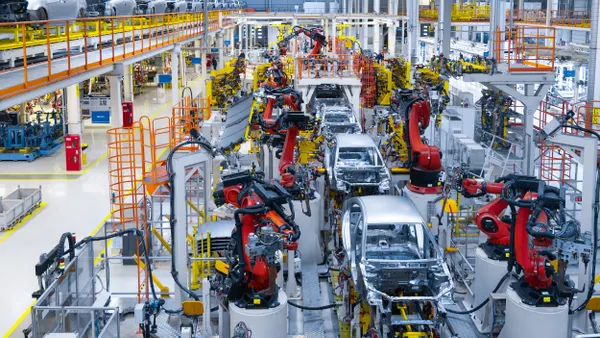Dive Brief:
- The U.S. Department of Energy on Wednesday highlighted plans to fund projects at four nuclear plants to demonstrate the clean production of hydrogen.
- Developing a robust and cost-efficient hydrogen market is seen by the utility sector and others as key to meeting goals for zero carbon emissions by 2050.
- Partners include Constellation Energy, Energy Harbor, Bloom Energy, Xcel Energy and Arizona Public Service.
Dive Insight:
DOE estimates that a single 1,000-megawatt nuclear reactor could produce up to 150,000 tons of hydrogen each year.
That hydrogen could be used in fuel cells to produce electricity, but the production process everywhere is costly and yet to be demonstrated at scale.
DOE and the power sector anticipate that hydrogen could displace natural gas as the nation attempts to transition to 100% clean energy by 2050.
Hydrogen also can be used in industrial processes or as a transportation fuel for fuel-cell vehicles and airplanes.
The demonstration projects are part of a $7 billion program DOE announced in September to help lower the cost and scale-up the production of clean hydrogen. The plan calls for the creation of six to 10 regional hydrogen hubs to produce, store and distribute hydrogen.
At least one of the hubs will be focused on clean hydrogen production using nuclear energy, DOE said.
Currently, about 95% of the hydrogen produced in the U.S. comes from natural gas, resulting in carbon emissions along with hydrogen and carbon monoxide.
Emissions-free hydrogen can be produced through low- and high-temperature electrolysis by splitting water into pure hydrogen and oxygen using high-temperature electrolyzers. Reactors, with their constant heat and electricity production, are deemed by DOE to be ideal facilities for creating a new hydrogen market.
The Nine Mile Point Nuclear Power Station in Oswego, N.Y., will be the first nuclear-powered clean hydrogen production facility in the U.S. and will use the hydrogen to help cool the plant.
DOE gave the plant operator, Constellation Energy, a grant in 2021 to build a low-temperature electrolysis system.
Partnering with Constellation are Nel Hydrogen, Argonne National Laboratory, Idaho National Laboratory, and the National Renewable Energy Laboratory.
Constellation plans to begin producing hydrogen before the end of the year.
Energy Harbor is working on a low-temperature electrolysis system at its Davis–Besse Nuclear Power Station in Oak Harbor, Ohio.
The goal is to prove the technical feasibility of clean hydrogen production that could facilitate future opportunities for large-scale commercialization, DOE said.
Production is expected by 2023.
Bloom Energy and Xcel Energy are working on a first-of-a-kind project to demonstrate high-temperature electrolysis at the Prairie Island Nuclear Generating Plant in Red Wing, Minn.
The data collected from this demonstration will be used to scale up this process, with hydrogen production expected in early 2024.
DOE is negotiating an award with Arizona Public Service and PNW Hydrogen to demonstrate another low-temperature electrolysis system at the Palo Verde Generating Station in Tonopah, Ariz.
The hydrogen would be used to produce electricity during times of high demand or make chemicals and other fuels. The project could start producing hydrogen in 2024












